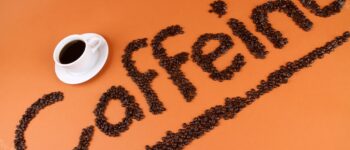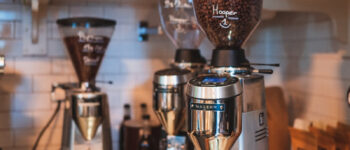Short answer: no, there is not a meaningful difference between “espresso beans” versus “coffee beans.” While the terms aren’t fully interchangeable, there isn’t a clear-and-sharp distinction between “espresso and coffee beans.”
If people are intending to distinguish with the term “espresso bean,” they’re likely using it to mean “more darkly roasted” coffee beans. Yup, it turns out that espresso roast vs. dark roast is really just the same thing, too.
In the rest of this article, we’ll get into a bit more about where this whole “espresso bean” business came from. But just take my word when I tell you that your delicious “chocolate covered espresso beans” are not different than a “chocolate covered coffee beans.” No I don’t sell them, and I think they’re delicious.
Let’s explore a little more the question of “What is the difference between coffee and espresso?”
But what, then, are “Espresso beans”?
Since I already kind of broke the news to you that there isn’t a substantial difference between “espresso beans” vs. “coffee beans,” the question remains: why do we sometimes see “espresso beans” marketed? Short answer is (I must assume) “it sells.” Because people think “espresso beans” sounds better or means something else.
I most frequently see thing called “espresso beans” when it’s preceded by “chocolate covered” and that’s really great. I really like few snacks better than those (assuming I’m also staying awake for a while. 😳) But you’ll also see coffee at the grocery store labelled “espresso blend” and if you do, it’s because this is generally going to be a darker roast.
Understanding coffee roast levels
I’m sure some of our readers are “old hat” at this conversation (feel free to skip), but for those who don’t quite get what I mean by “darker roast,” a quick overview. (You can read more about this topic in Meg’s article on How to Make Black Coffee Taste Good).
See more : How Much Coffee per Cup? This is How You Get it Right
The things we call “coffee beans” are kind of like the “pit” of a coffee cherry (using wiggle words because not a botanist). These beans are generally extracted “green” from the fruit, and then shipped off the farm where they grew at this stage. They are later roasted by someone for you. Generally these “roasters” are near you, but they also may be in a factory that ships to a supermarket. But you’ll generally drink coffee roasted at least within your country.
As you might expect, when you “cook” coffee beans from “green” to “brown” and then maybe “black,” you’ll see lots of different shades of brown. Different lengths of time will change how quickly the beans will change color. And I could go on and on (after some research) about temperate curves, etc. But suffice it to say “short-roasted” beans will be lighter in color, and “longer-roasted” beans will be “darker roasts”
In this journey of going from green to black, coffee tastes different at each stage (that’s why you roast it). You correctly guess that “greener” coffee beans taste more of the dirt they were grown in, the elevation they were grown at, the specific strain they are, etc. As you get to black, things just taste “burnt.” And the browns nearer to that have flavors that come in just before burnt: caramelly sweetness, chocolatey warmth, etc.
It wasn’t long ago that Espresso was *very* cool
While we’d say (on the “peak of the third wave”) that darker roasted coffee are now increasing on the way out of fashion, it wasn’t long ago that espresso really fully and completely ruled the roost in coffee. Very broadly and impressionistically, after the World War II era of GI coffee, came the era or “easy to make” and “mass market” coffees: Folgers, Maxwell House, Chock-full-o-nuts were the big brands in America at the time.
That eventually gave way to a fashion for Italian-influenced espresso both in America and around the world. People talk about Starbucks as the vanguard of America’s espresso culture. And that both matches and differs from my understanding (but is too big a tangent).
At the same time that Starbucks was rising, there was also a time for the most exotic forms of espresso. I think of a machine very like the other in Uncle Jesse’s “cool” night club—The Smash Club—on the American family sitcom Full House. (Full House is a cultural touchstone both Meg and I share. And it dates us to a very particular age-range and demographic profile 🤓).
Anyway, in the 1990s espresso was hip. On the other hand, “coffee” was a mediocre beverage you drank at home.
See more : How to Brew the Perfect Cup of Coffee
And the “hipness” of espresso in those days has a lot to do with when and where you see “espresso” marketed before coffee. Or why you’ll sometimes see people selling “espresso coffee beans” even today. People want to clearly distinguish that theirs was the “hip” kind of coffee.
Did the third-wave of coffee put out the espresso fire?
We’ve, at various time, use the catch-phrase “riding the third wave” for what kind of coffee-delights we’re fans of here at Low-Key Coffee Snobs. LKCS is really about the coffee that is “hip” today in 2020, not the kind of stuff people loved in 1997. That’s the reason that we’re not really that into espresso. Well that, and, if we wanted to drink motor oil we just would. 🤪
More seriously, the “third wave” of coffee connoisseurship represents a real divergence from the past. The focus has become much more about the origin and nature of the coffee’s agricultural qualities, rather than it’s “roast qualities.” Where in the 90s, you were the height of cool with a Frappuccino, today some people look at you funny.
“Third-wave coffee” hipsters like our coffee black, full stop. And because we like our coffee to taste like a plant product, we’ll mostly complain about coffee tasting “burnt” if it cooked even to a commercial “Medium Roast” level. This isn’t to say we’re right—we’re self-identified “snobs,” it’s in the name of the site, remember?—but rather just why I don’t really like “espresso beans” where the term is marketed to mean “commercial dark roast.” (I don’t even like a commercial medium roast, remember?!)
Espresso with any roast level
Having told you that “third wave”/”hip in 2020” coffee is lightly roasted, you might be wondering why you were able to order an “espresso” at a place that totally seemed to be staring down its (proverbial) nose at you. It is because espresso is a way of *brewing* coffee beans, rather than a style of bean.
Maybe you thought that espresso tasted good, maybe you thought it was flavorless or tasted like a paper bag. All of those are very-reasonable reactions to an espresso made with a much more lightly-roasted coffee than you’re used to. But they all mean that they made you an “espresso” coffee and therefore could be said to be making it with “espresso beans.” By the rules on English and logic, I have made “espresso beans” into a meaningless phrase. 🤓 Teacher, may I please have a gold star? 🤪
It seems to me that dark roasted beans make a great candidate for espresso based on the types of drinks that are typically made with espresso shots. If you’re drinking espresso black, youch, that sounds like a recipe for pretty bitter and burnt-tasting coffee. If you’re blending your espresso with milk, cream, sugar, flavored syrups, macchiatto-this, macchiatto-that, then we can start to see why espresso roast vs dark roast are basically useful—and more or less the same.
Coffee beans vs. espresso Beans: There is a MINOR difference
Despite all I’ve said above, I will say that there is one thing that you’ll most often find people think of as an “espresso bean.” A darkly-roasted coffee bean. I’ve mentioned my love of chocolate-covered espresso beans throughout. But sometimes they are just the best treat in the world—shout out to Albanese from Merrillville, IN, USA (Meg’s hometown!)! But sometimes they’re pretty bad—tasting quite burnt to mean. I’m looking at you, Trader Joes. Use less-burnt coffee beans, please 🙏.
Nigel Gildon editor:Nigel Gildon is the editor of Chef Wayne’s Big Mamou: Chef Wayne’s Big Mamou. He has worked in the publishing industry for many years and has a passion for helping new authors get their work into the hands of readers. 63 Liberty Street * Springfield, MA 01003



